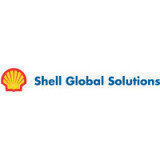A new technique for detecting gas emissions and estimating the locations and mass emission rates of sources.
We present a detailed description and experimental results for a new gas emission survey method that remotely detects and maps the locations of multiple gas emission sources distributed across an extensive area. Our method, which we call LightSource, not only localizes but also estimates the mass emission rates of each of the detected sources. The approach is generally applicable to any airborne contaminant that is passively transported and conserved during transport within the area of interest. We have applied this approach to methane and present results from an experimental evaluation of its performance using 17 calibrated releases and a novel optical beam gas sensor, which overcomes the inherent limitations of open-path gas sensors based on Beer's law absorption behaviour.
Two novel aspects of our approach are: our solution of the associated inverse gas dispersion problem using Monte-Carlo Markov Chain techniques within a fully Bayesian framework (this provides us with confidence bounds on all results such as location and mass emission rate; the second is our adoption of a Laser Dispersion Spectrometer (LDS), for our open-path gas sensor. This offers dramatic improvements in sensor precision, beam length, speed of measurement and immunity to common sources of measurement noise: such as the confusion of optical transmission variations (from beam mis-alignments, rain, fog, snow) with concentration changes. Our experimental data set comprise path averaged gas concentrations along each of 7 optical beams that are sequentially steered on a timescale of ˜1Hz. Simultaneously we acquire 3D ultrasonic anemometry data and use this and the derived turbulence intensities to drive a simple Draxler Gaussian plume eddy dispersion model. Mass emission rates are measured by logging the weight of our gas cylinders; all gas releases were from 2x2m diffuse area sources on the ground, which were located up to 100m from the sensor, gas release rates were in the range of 1-2kg/hr.
Our LightSource analysis method solves the inverse problem of where sources are and what emission rates are required to best explain the data. We use a Gaussian plume atmospheric eddy dispersion model as our forward model; this provides an ensemble average of expected dispersion for steady state passive releases. The low concentration gas (hence no buoyancy effects) is passively transported by advection and diluted by turbulence in the atmosphere, which is a stochastic process. Effective dispersion prediction is fundamentally dependent on good measurements of: wind direction, wind speed and turbulence as well as high precision concentration data. We require sufficient data to adequately reflect the steady state plume and hence be compatible with the steady-state ensemble average for concentration predicted by the dispersion model.
It is important that our dispersion model is in closed form - and hence simple- as it operates within our Markov Chain Monte Carlo (MCMC) scheme and the computational complexity must be kept manageable. It is also debatable just how much better more complex models perform in practice, given the underlying stochastic nature of atmospheric dispersion and limited knowledge available on the 3D trajectory of the gas.
The advantages of this approach over tomographic approaches proposed by others, are that the required instrumentation is simpler, the volumes of data lower, and sources outside the beam array are not excluded. Our experimental results demonstrate that we can distinguish and usefully estimate the individual mass emission rates of single and multiple sources both within and outside the beam array based on surprisingly limited changes in windspeed and direction.
Free to watch
Sessions are free to watch. Please login to view this session or create an account.
Speakers

Bill Hirst (Shell)
Digital Edition
PIN 25.1 Feb/March
March 2024
In This Edition Safety - The technology behind the ION Science Tiger XT - Safety with ammonia and LOHCs as hydrogen carriers Analytical Instrumentation - Discussion on new tribology te...
View all digital editions
Events
Apr 22 2024 Hannover, Germany
Apr 22 2024 Marrakech, Morroco
Apr 22 2024 Muscat, Oman
Apr 22 2024 Rotterdam, Netherlands
Apr 23 2024 Singapore















